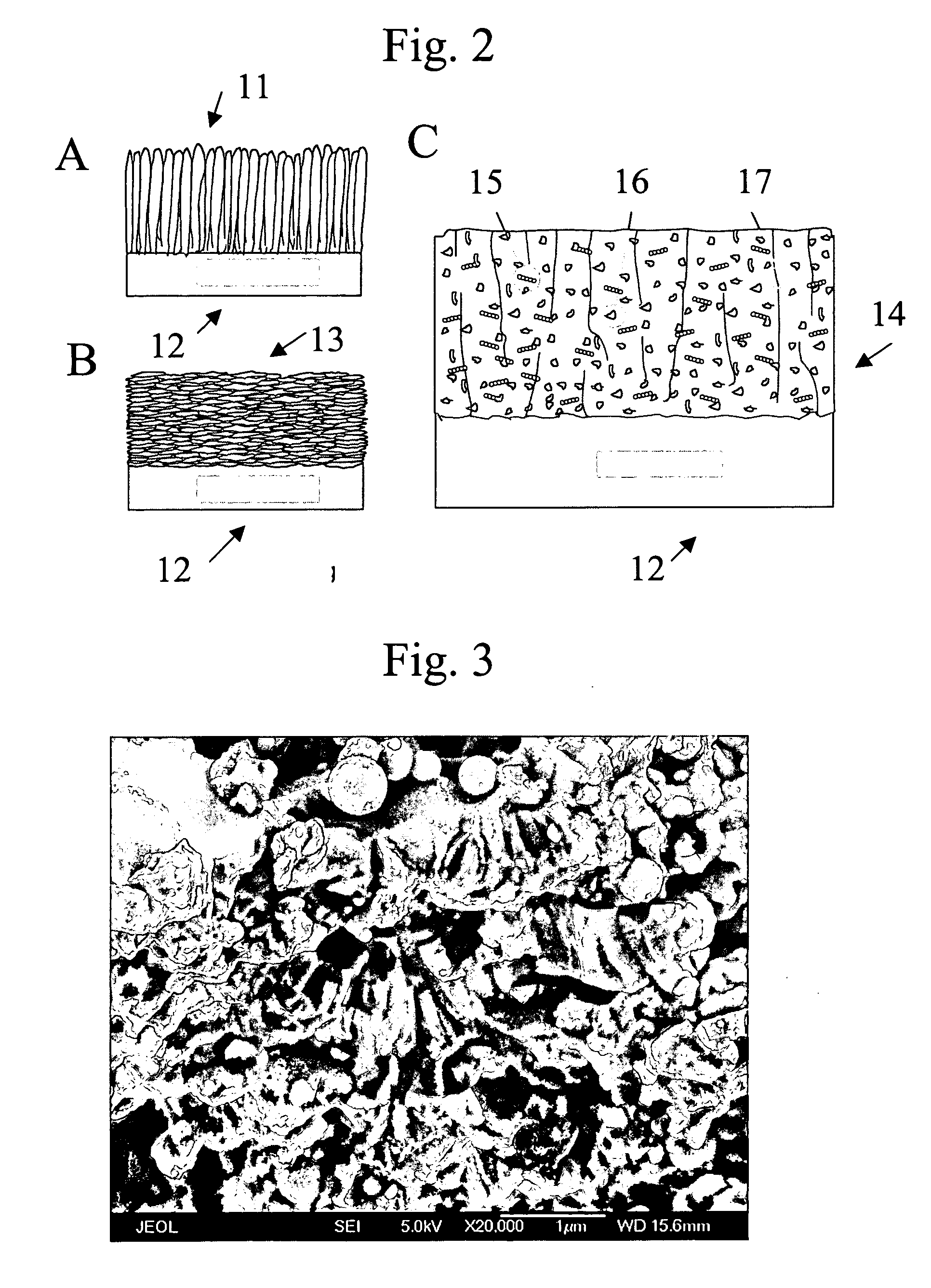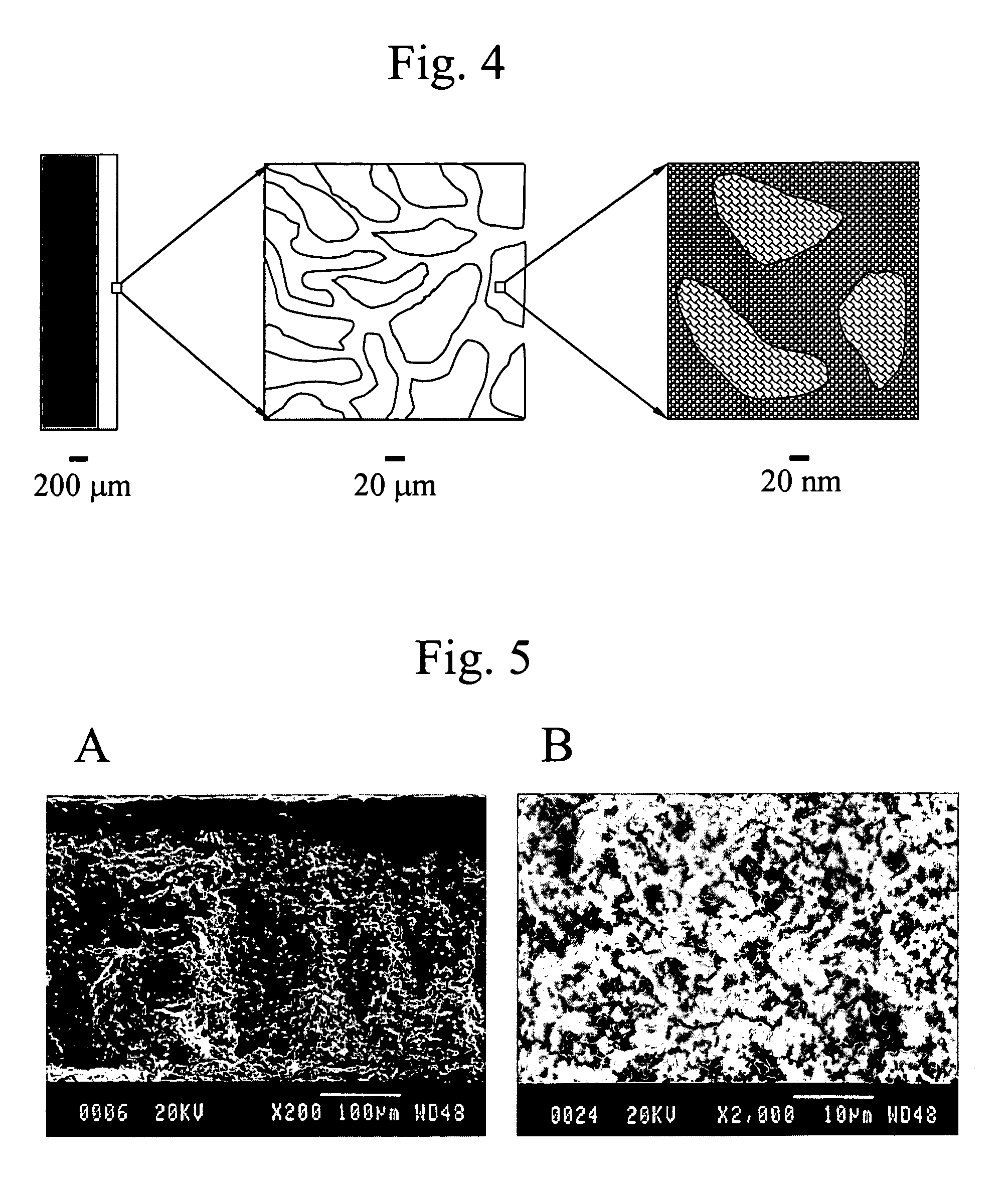Coatings, materials, articles, and methods of making thereof
a technology of coatings and materials, applied in the field of coatings, materials and articles, can solve the problems of complex interaction between the microstructure, material failure, and the inability of the current available deposition method to manipulate all the above-described microstructural features, and achieve the effect of improving thermal cycling behavior and durability in thermal cycling tests
- Summary
- Abstract
- Description
- Claims
- Application Information
AI Technical Summary
Benefits of technology
Problems solved by technology
Method used
Image
Examples
example 1
ZrO.sub.2+7 wt % Y.sub.2O.sub.3 (7YSZ) Thermal Barrier Coating
[0077] The precursor solution was prepared as follows. Zirconium acetate was dissolved in a weak organic acid and then mixed with distilled water to form a solution having a pH of 3-5. The Zr solution was mixed with yttrium nitrate to form a precursor solution. Multiple coatings were formed by deposition of the precursor solution according to the parameters in Table 2.
[0078] The solution plasma spray deposited 7YSZ had a porosity of about 15 volume % to about 30 volume % of the total volume of the coating and a thickness of about 300 micrometers to as much as 3,000 micrometers. The 7YSZ coating was well bonded to the substrate, contained fine splats, and contained some spaced vertical cracks as well as micrometer and nanometer-sized porosity. FIG. 3 shows the splats and vertical cracking. Moreover, the 7YSZ coating structure was verified to be stable in retaining nanometer grain size and reducing sintering during long-ter...
example 2
ZrO.sub.2+20 wt % Y.sub.2O.sub.3 (20YSZ) Electrolyte Layer
[0080] The precursor solution was prepared by dissolving zirconium acetate in acetic acid and then mixing with distilled water with a pH of 3-5. Then yttrium nitrate was mixed with the solution to form the precursor solution. Multiple coatings were formed by deposition of the precursor solution according to the parameters in Table 2.
[0081] The solution plasma spray deposited 20YSZ had a porosity of less than about 2 volume % of the total volume of the coating (FIG. 6A). The coating was crack-free and adherent to the substrate when its thickness was below 100 micrometers. However, vertical cracks and coating exfoliation occurred in coatings having a thickness more than 200 micrometers. The coating comprised cubic-ZrO.sub.2.
[0082] A stainless steel strip was coated with a solution plasma spray-applied 20YSZ coating, then bent into 90.degree. angles. As shown in FIG. 10, no spallation in the deformed area was found with the exce...
example 3
Al.sub.2O.sub.3 Coating
[0083] The precursor solution was prepared by dissolving aluminum nitrate in distilled water to form a 1.0 mole precursor solution. Coatings were formed by deposition of the precursor solution according to the parameters in Table 2.
PUM
| Property | Measurement | Unit |
|---|---|---|
| temperature | aaaaa | aaaaa |
| temperature | aaaaa | aaaaa |
| diameter | aaaaa | aaaaa |
Abstract
Description
Claims
Application Information
 Login to View More
Login to View More - R&D
- Intellectual Property
- Life Sciences
- Materials
- Tech Scout
- Unparalleled Data Quality
- Higher Quality Content
- 60% Fewer Hallucinations
Browse by: Latest US Patents, China's latest patents, Technical Efficacy Thesaurus, Application Domain, Technology Topic, Popular Technical Reports.
© 2025 PatSnap. All rights reserved.Legal|Privacy policy|Modern Slavery Act Transparency Statement|Sitemap|About US| Contact US: help@patsnap.com



